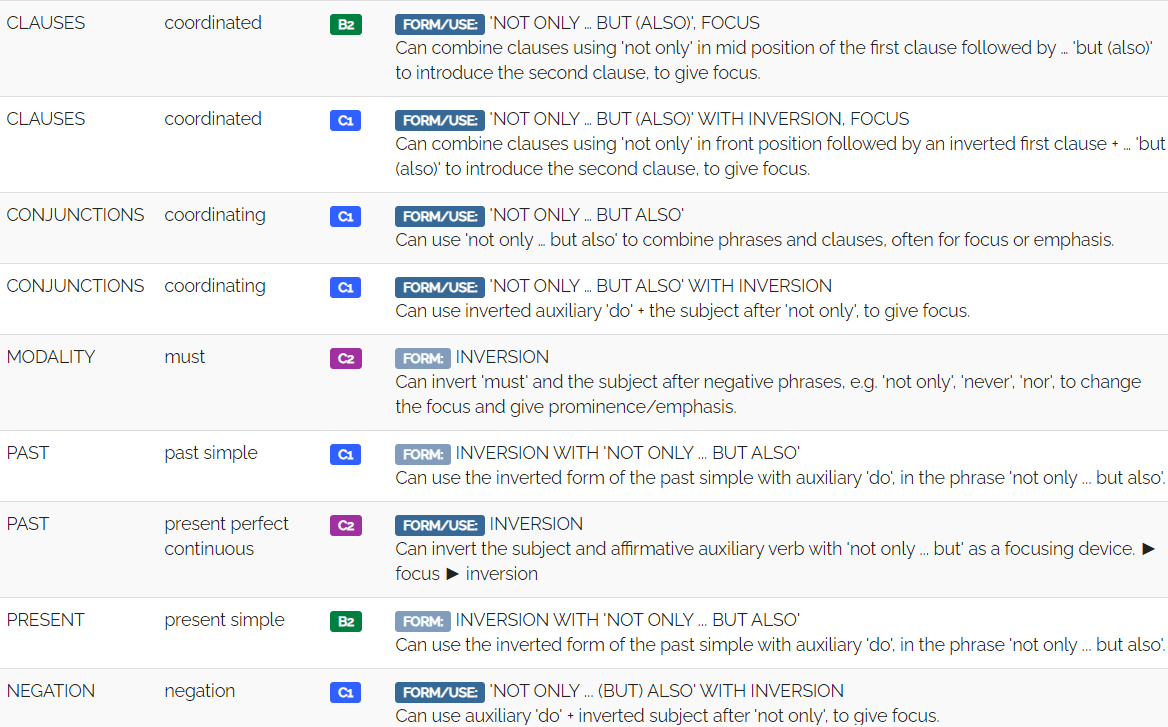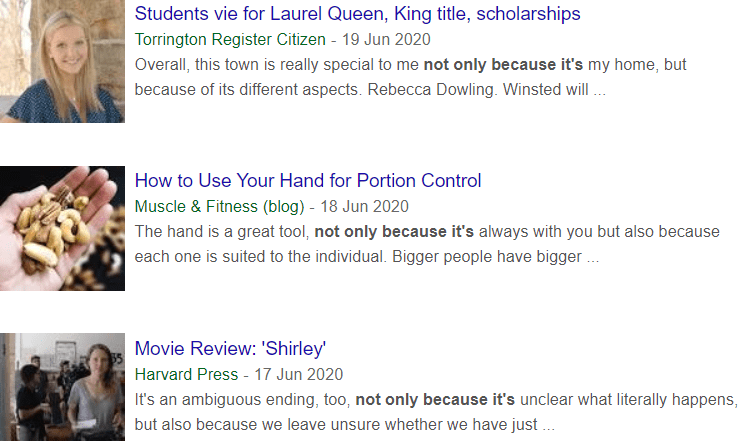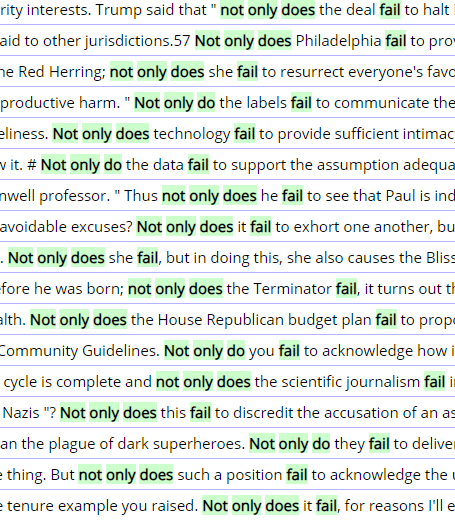B2 example:
Our volunteers know that the families who benefit from his generosity
not only appreciate his action but take extra pleasure in knowing that it comes with the compliments of Mrs Brown, an iconic and internationally famous Dublin mother.
C1 example:
Not only did this virus continue in the places where they’d already become infected, but then it started to escalate and we saw the case numbers that you see here, something we’d never seen before on such a scale, an exponential increase of Ebola cases not just in these countries or the areas already infected in these countries but also spreading further and deeper into these countries.
Nine points on the English Grammar Profile cover the ‘not only’ ‘but also’ grammar structure. It is easy to see that using the structure is all over B2, but it is not easy to find exact matching for each and every point. In reality, these points will be quite rare in most students work. In this post, we will not cover all of the points, but we need to be aware of some of them when looking for exact examples of what is B2.
At B2 Point 96 in the category of CLAUSES that are coordinated is defined as:
combining clauses using ‘not only’ in mid-position of the first clause followed by ‘but (also)’ to introduce the second clause, to give focus.
This seems much more complex than the other ways of using this grammar structure. Both examples given follow either a comma or a semicolon and a following ‘because.’ Whether or not they are required is irrelevant. They will, however, help find the match.
,|; not only because …. but also|because
A search on iWeb for , not only because * * followed by the usual subject-verb word order:
3 , NOT ONLY BECAUSE IT IS 335 – B2 Point 96

4 , NOT ONLY BECAUSE THEY ARE 222 – B2 Point 96

5 , NOT ONLY BECAUSE IT ‘S 186 – B2 Point 96
So after trying to look for a variety ways of discovering the language in the corpora using collocations, it was too hard to get the types of clusters we are looking for, therefore, in iWeb, we run wild cards after ‘not only’ focused on b1 vocabulary one level below b2. We do that first so that we expand lexical complexity, not because the grammar points require it.
not only * * * * *
8 NOT ONLY DOES IT ALLOW YOU TO 200 (Point 30 PRESENT B2)
34 NOT ONLY GOOD FOR THE ENVIRONMENT, 106 (Point 21 CONJUNCTIONS coordinating C1)
*Notice that not only comes after a verb.
48 NOT ONLY WILL YOU HAVE ACCESS TO 91 (113 CLAUSES coordinated C1)
*inverted modal Auxillary
not only * * * *
76 NOT ONLY DOES IT PROVIDE A 211 (Point 30 PRESENT B2)
For Point 30, on the COCA corpus if we do a collocate search up to 9 spaces to the right of ‘not only do|does‘ we find that ‘fail’ is the most frequent.
Point 24 in NEGATION at C1 is defined as:
auxiliary ‘do’ + inverted subject after ‘not only’, to give focus.













